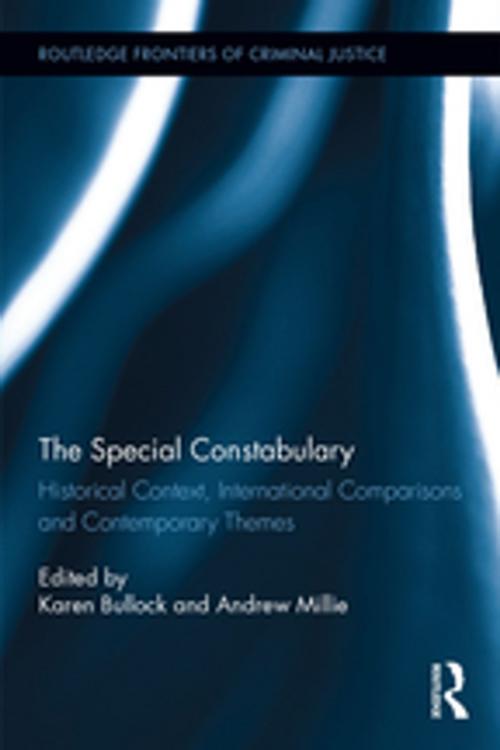The Special Constabulary
Historical Context, International Comparisons and Contemporary Themes
Nonfiction, Social & Cultural Studies, Social Science, Crimes & Criminals, Criminology| Author: | ISBN: | 9781315441023 | |
| Publisher: | Taylor and Francis | Publication: | July 6, 2017 |
| Imprint: | Routledge | Language: | English |
| Author: | |
| ISBN: | 9781315441023 |
| Publisher: | Taylor and Francis |
| Publication: | July 6, 2017 |
| Imprint: | Routledge |
| Language: | English |
Special constables are warranted officers retained within British constabularies. Wearing similar uniforms, carrying the same personal protective equipment and holding identical powers to enforce the criminal law, special constables are to all intents and purposes indistinguishable from their colleagues in the regular police service. However, very little is documented about the experiences and motivations of special constables, the roles they play in contemporary policing or the impact that they have on the police organisation.
This book draws together academics and practitioners to provide a valuable insight into historical, international and contemporary themes pertinent to the historical development and contemporary operation of the special constabulary. The book critically considers the origins of the special constabulary and the political, social and economic factors which led to its evolution over time. It compares and contrasts the organisation, functions and status of the special constabulary with other auxiliary forces, notably from the United States. The book also contributes to theoretical understanding of contemporary policing, to debates about the roles and operation of the 'mixed economy' of provision, and informs policy and practice in the United Kingdom and beyond.
Special constables are warranted officers retained within British constabularies. Wearing similar uniforms, carrying the same personal protective equipment and holding identical powers to enforce the criminal law, special constables are to all intents and purposes indistinguishable from their colleagues in the regular police service. However, very little is documented about the experiences and motivations of special constables, the roles they play in contemporary policing or the impact that they have on the police organisation.
This book draws together academics and practitioners to provide a valuable insight into historical, international and contemporary themes pertinent to the historical development and contemporary operation of the special constabulary. The book critically considers the origins of the special constabulary and the political, social and economic factors which led to its evolution over time. It compares and contrasts the organisation, functions and status of the special constabulary with other auxiliary forces, notably from the United States. The book also contributes to theoretical understanding of contemporary policing, to debates about the roles and operation of the 'mixed economy' of provision, and informs policy and practice in the United Kingdom and beyond.















